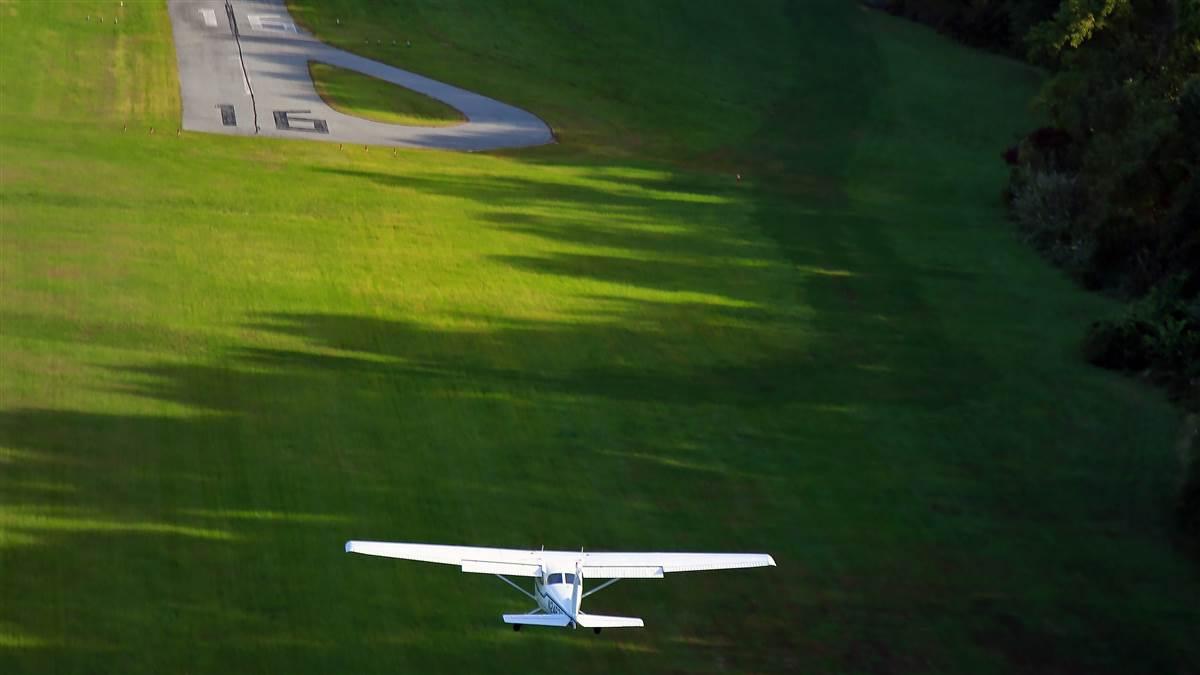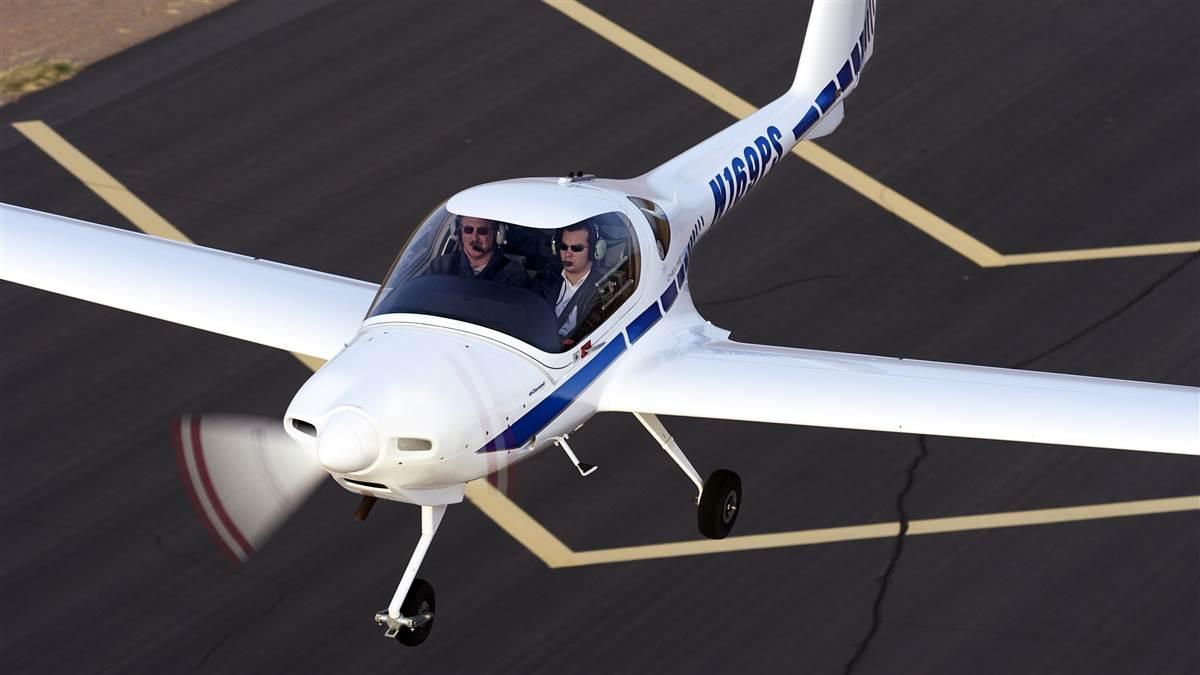Art of the touchdown
Make it pretty and it will be right

Flight is at its best when sprinkled with a high level of grace and precision. Nowhere is that more apparent than the process of reuniting a magical machine with the runway. The difference between the mechanical practitioner and the artist is apparent; the former is just getting the airplane on the ground, while the latter is doing it with style.
Everyone who flies knows an outstanding landing when he or she sees one. However, many pilots are not sure of the elements that make that particular landing outstanding. This is why many pilots seldom make a perfect landing: The parameters that define that landing are not clearly in mind. They’ve practiced at making it work from the inside of the cockpit, but they don’t have a clear image of what it should look like from the outside.
Pilots want to make pretty landings (unless you’re a Navy pilot, where hooking a wire on an aircraft carrier is more important than aesthetics). We want to be the pilot who gets the thumbs-up from the know-it-alls in the peanut gallery, and we do that by getting all the details right.
No one attribute of a perfect landing requires superhuman skill, yet the whole package is seldom seen. Why? Maybe because not all the attributes are required for a landing to be safe, so the benefits are largely intangible.
So what’s the secret behind making perfect landings? Let’s look at points that make a landing better than the rest and examine the techniques behind each.
• Be on speed, so float is not exaggerated. There is an erroneous thought that speed is a pilot’s friend on landing. Sure, you don’t want to be too slow, but bringing it over the fence well above the pilot’s-operating-handbook-recommended approach speed just eats up runway, introduces a tendency to balloon, and gives nasty winds more time to beat up the airplane. The factory put this approach speed in the POH for a reason: The airplane handles better and is most efficient at that speed. However, that’s an average speed for most airplanes of that make and model. To determine the exact best over-the-fence speed for your airplane, start making approaches five miles per hour over what is recommended. Then make successive approaches, first two miles per hour slower, then four slower, and so forth. What you’re looking for is a speed over the fence that gives a three-second float. (That sounds short, but it’s not—count it out and you’ll see.) Less than that, and you’re slow. More than that, and you’re fast.
 • Fine-tune visual acuity so small motions are seen. You can’t fix what you can’t see. Precise and graceful touchdowns are the result of mentally “seeing” where we want the airplane to go, and being hyper-aware of the smallest deviations from our predetermined path.
• Fine-tune visual acuity so small motions are seen. You can’t fix what you can’t see. Precise and graceful touchdowns are the result of mentally “seeing” where we want the airplane to go, and being hyper-aware of the smallest deviations from our predetermined path.
• Keep glidepath straight and stable, not low and dragged in using power. The glidepath should always be a straight line aimed right at the numbers. The numbers will be stationary in your windshield as you approach; however, you won’t land on the numbers because the flare will carry you past them.
• Everything is smooth and flows together. Smoothness and flow are the results of planning well in advance, so no sudden corrections are needed. This eliminates unpleasant surprises. All movements should be caresses and squeezes, not pokes and jabs.
• Set configuration (flaps, gear, et cetera) early. To fly the much-vaunted stabilized approach, it helps immensely if the final landing configuration is set earlier rather than at the last moment on short final.
• Speed and glidepath interact to put the touchdown slightly past the numbers. Although the glidepath is aimed at the runway numbers, a flare in the normal position will let the airplane touch down around 500 to 700 feet down the runway. With minimal braking, this will let almost any general aviation airplane come to a halt having used around 1,500 feet of runway.
• Put the airplane gently on the mains. In the flare, a combination of forces, including wind, will conspire to move the airplane around. It is only through visual fixation on the edges of the runway well ahead that motions can be detected early and small control inputs used to counter those motions.
 This is also a point where a pilot’s feel for the airplane comes into play. While in the flare, the pilot should try to read what the airplane is saying through the controls and combine that input with what he or she sees. The pilot sees the nose trying to decrease its pitch angle as the airplane moves toward the ground. To finesse the touchdown, the acuity of both sight and touch is critical. We want the mains to roll on, not be dropped on. All control movements should be pressures, not abrupt inputs where the pilot is fighting the airplane.
This is also a point where a pilot’s feel for the airplane comes into play. While in the flare, the pilot should try to read what the airplane is saying through the controls and combine that input with what he or she sees. The pilot sees the nose trying to decrease its pitch angle as the airplane moves toward the ground. To finesse the touchdown, the acuity of both sight and touch is critical. We want the mains to roll on, not be dropped on. All control movements should be pressures, not abrupt inputs where the pilot is fighting the airplane.
Finding that feel is easier in some airplanes than others. In a Cessna with full flaps, the pilot is required to control a delicate balance between speed and nose attitude. The slightest increase in attitude without a corresponding decrease in airspeed leads to a balloon. In the initial flare, before the speed begins to burn off, it is nearly impossible to get the nose up without ballooning. Patience is required—lots of it, especially if the airplane was fast in the approach. As the speed decreases, control pressures diminish, which allows a gradual increase in the nose attitude without an increase in altitude. This is all happening at three to five feet above the runway. Then, as the speed bleeds off, there is a point where the pressure in the yoke noticeably decreases and the airplane is falling. The attitude can now be increased without ballooning. Patience is the name of the game, but having the correct airspeed on short final makes it much easier.
• On touchdown, the nosewheel is held above the ground, in a stable attitude. As the mains touch, it is helpful to have just a hint of elevator travel left to be used in holding the nose gear off the ground. If the yoke is against the stop, the nose has no choice but to plop onto the runway. The stable, slightly nose-high initial rollout indicates the pilot is controlling all the variables up to that point. More important, it shows that he has a definite idea of how a landing should look, and does what is necessary to accomplish that.
• The nosewheel is held off as airflow over the elevator decreases. The nosewheel is not held up until the tail is no longer effective—that would let it fall of its own accord, and possibly bounce. That’s not pretty. Ideally, while there is still enough wind across the tail to give a little elevator control, the nosewheel is gently lowered to the ground before it has a chance to fall.
• All of this happens right on the centerline. Although it is not a mortal sin to land off center, it should be a point of pride that we nail the centerline every time. However, if we do happen to be off to one side, don’t make a big deal out of it. Trying to make big directional corrections right after touchdown is both unnecessary and risky. Just keep it parallel to the center stripe and move it over only if necessary. There is no substitute for being stable and parallel to centerline.
None of this is brain surgery. Anyone can do it—if they try and really want to, that is. A beautiful landing is as much a product of mindset as it is of skill. The pilot must have the image of the perfect landing in his mind and be willing to work to develop the skills necessary to duplicate that image. If the desire to make pretty landings isn’t there, any pretty landings made would be mostly a matter of luck. And pilots should hate depending on luck for anything.


